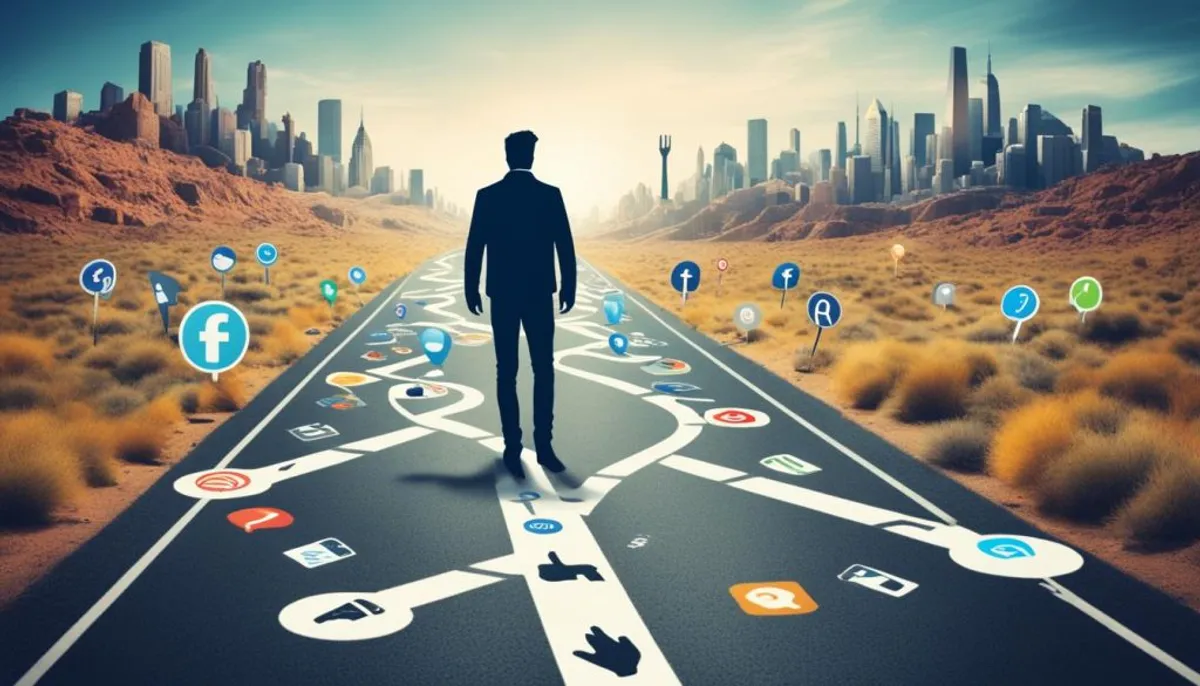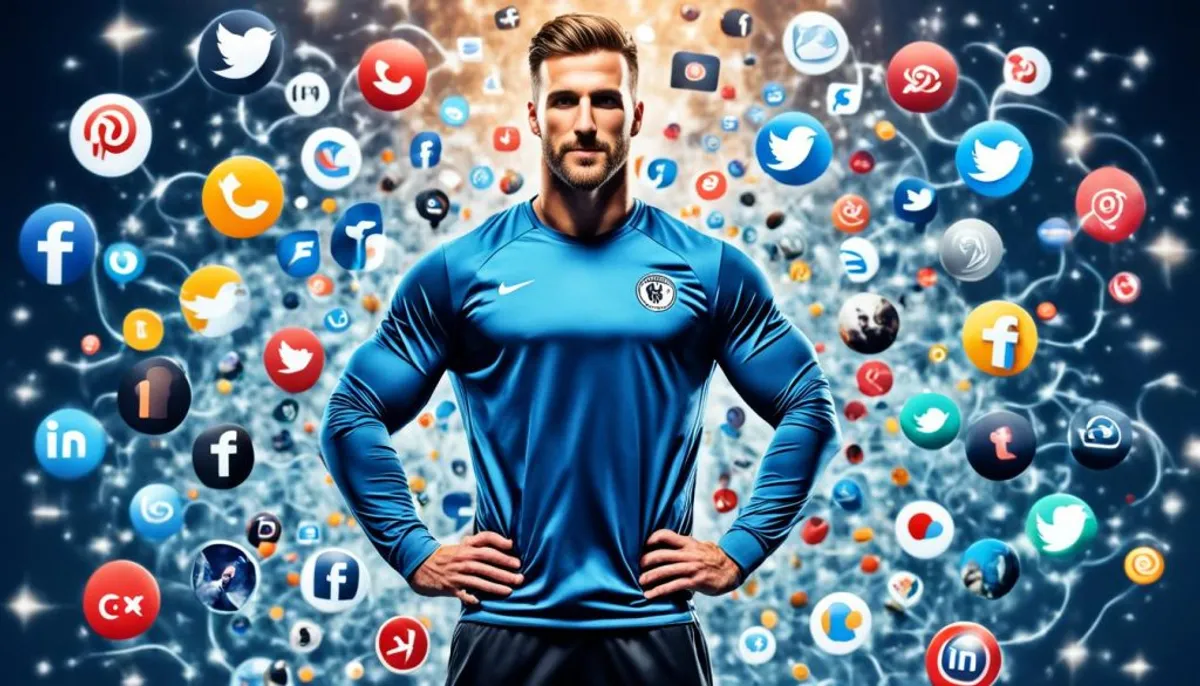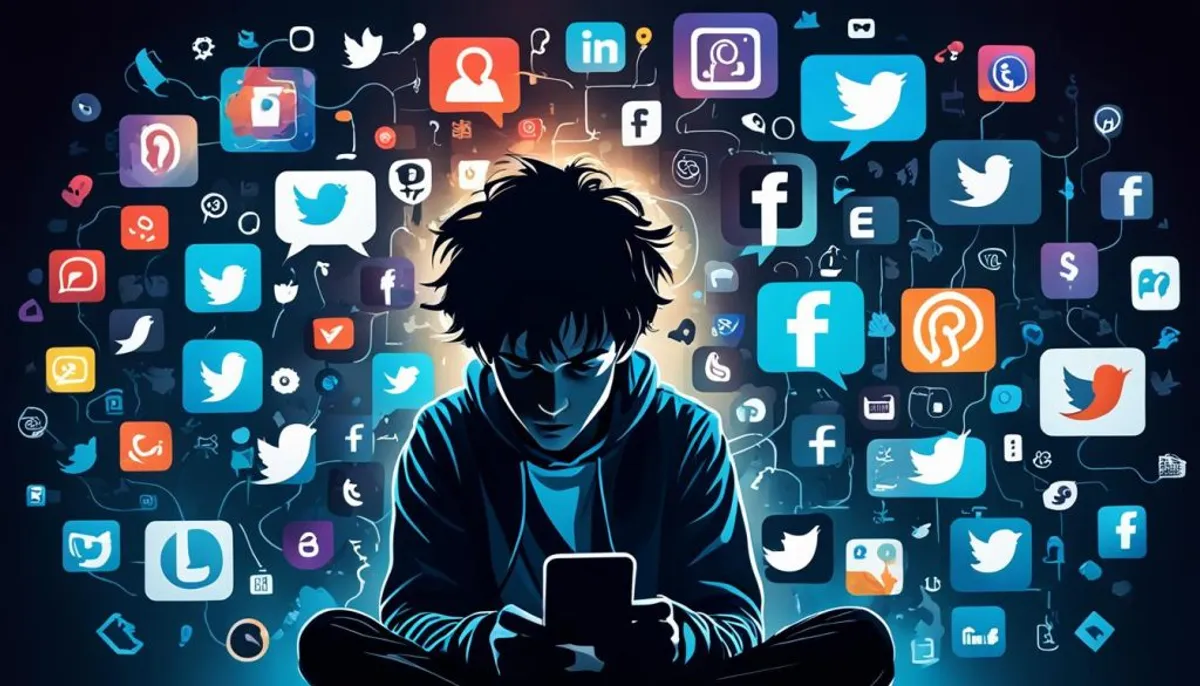Social media is a big part of our lives today. Most adults and nearly all young adults use it often. It has a big effect on athletes, both good and bad. This guide will look at how social media affects athletes, including the importance of social media account discovery, and how to keep teens safe online.
We’ll also talk about the good and bad sides of social media. Plus, we’ll share tips on how to manage your child’s online presence.

The Multifaceted Impact of Social Media on Athletes
Social media is a big part of today’s sports world. It offers both good and bad sides for athletes. On one hand, it helps athletes connect and share their thoughts. But, it can also hurt their mental health.
The Downsides of Social Media
Young athletes often compare themselves to others online. They look at their looks, friends, and achievements. But, what they see online is often just the best parts of others’ lives.
This unfair comparison can make them feel bad about themselves. It can lead to feeling sad, having a poor view of their body, and feeling bad about their looks, which raises questions about authenticity in digital life.
Being online also makes it easier for bullying and hate to happen. Athletes often face harsh criticism or even discrimination online. In 2021, E.J. Liddell faced mean comments and threats after a game loss. Despite this, he stayed online because athletes need to promote themselves to make money, and strengthening relationships through social media is essential for their career growth.
The Upsides of Social Media Use
Sports have grown global thanks to social media, including social media platforms for seniors. It helps athletes make new friends and connect with others. Through it, they can share their lives and connect with fans.
It also lets athletes talk about important issues quickly. Many athletes use it to speak up for social justice and discuss the importance of authenticity in digital life. They find it rewarding to have a big audience.
Social media gives athletes tools to improve their game. They can watch game footage and get feedback right away. This helps them learn and grow, boosting their confidence.

Protecting Your Teen’s Well-being on Social Media
As parents, guiding our teens through the digital world can feel overwhelming. Social media brings many benefits but also risks to their well-being. It’s important to know these risks to help our teens stay healthy and happy.
Understanding Social Media Risks for Teens
A study showed that teens can’t go a day without social media apps. They often spend two or more hours daily on at least one platform. This social media use can harm teens, making them feel bad about their bodies and themselves.
Also, cyberbullying is a big worry, leading to online harassment and mental health problems like anxiety and depression. The desire for likes and the fear of missing out can make these issues worse. Additionally, the social media dangers associated with these platforms can exacerbate the negative effects on mental health.
Using social media before bed can mess up sleep patterns and hurt sleep quality. Good sleep is key for teens’ growth and health.
| Potential Social Media Risks for Teens | Impact |
|---|---|
| Negative body image | Low self-esteem |
| Cyberbullying | Increased anxiety and depression |
| Disrupted sleep patterns | Decreased sleep quality |

As parents, knowing these risks is crucial. We must act to shield our teens from social media dangers. By understanding the challenges and being part of their online life, we can guide them to use social media wisely.
Social Media Ups and Downs
The world of navigating social media is complex, full of ups and downs. For teens, it’s especially tricky. They find chances to express themselves, connect with friends, and learn a lot. But, they also face risks like social comparison, cyberbullying, and harm to their mental health.
To make the most of social media, we need to understand it well. It can be a place for teens to share their talents and interests. However, it is also essential to be aware of the social media dangers that can arise. They can meet others who share their passions and feel like they belong.
But, seeing perfect lives online can make teens feel bad about themselves. The danger of cyberbullying adds to the problem. Mean comments and harassment can really hurt someone’s mental health.
Dealing with social media’s ups and downs needs a careful plan. Parents and teachers should talk openly, set rules, and teach teens good online habits. This way, teens can use social media wisely and stay strong.
The social media benefits and challenges for teens are complex, and understanding the social media dangers is crucial. They need a detailed approach to keep the online world positive and helpful for growing and connecting with others.
Managing Your Child’s Digital Footprint
As our kids spend more time online, parents must help manage their digital footprint. This means setting up parental controls to block bad content and watch their online actions. It also means teaching them about the dangers of sharing personal information online and the social media dangers that can arise from oversharing and interacting with strangers.
Setting Up Parental Controls
It’s key to set parental controls on devices and social media for your child’s online privacy. Many platforms let you block content that’s not right for their age, watch their online actions, and limit how long they use devices. By looking into and setting these options, you can feel more at ease and keep your child safe online.
Implications of Sharing Personal Information Online
Even small posts and personal information sharing can have big effects on kids. What’s shared online can be hard to take back and might affect a child’s future. By talking openly and teaching your child about the risks, you can help them stay safe and responsible online.
Setting clear rules and talking often with your child is key to managing their digital footprint. With a hands-on approach and focus on online privacy, you can help your child do well in the digital world.
| Parental Control Feature | Description |
|---|---|
| Content Filtering | Restricts access to age-inappropriate or harmful content |
| Activity Monitoring | Tracks and logs your child’s online activity and device usage |
| Time Limits | Allows you to set daily or weekly time limits on device usage |
| App Restrictions | Blocks access to certain apps or allows only approved apps |
Conclusion
Social media is a big part of our lives today. It changes how athletes and teenagers connect and share. While it brings many benefits like better communication and self-expression, it also has big challenges, especially regarding authenticity in digital life.
Social media shows both good and bad sides. We see the harm from social comparison and cyberbullying. But, it also offers chances for positive feedback and building confidence online. By knowing these effects, we can help young people use social media wisely.
We can teach young people to be smart online by talking openly and setting rules. This way, they can make the most of social media safely. By doing this, we help them grow, express themselves, and stay healthy in the digital world.
RelatedRelated articles



